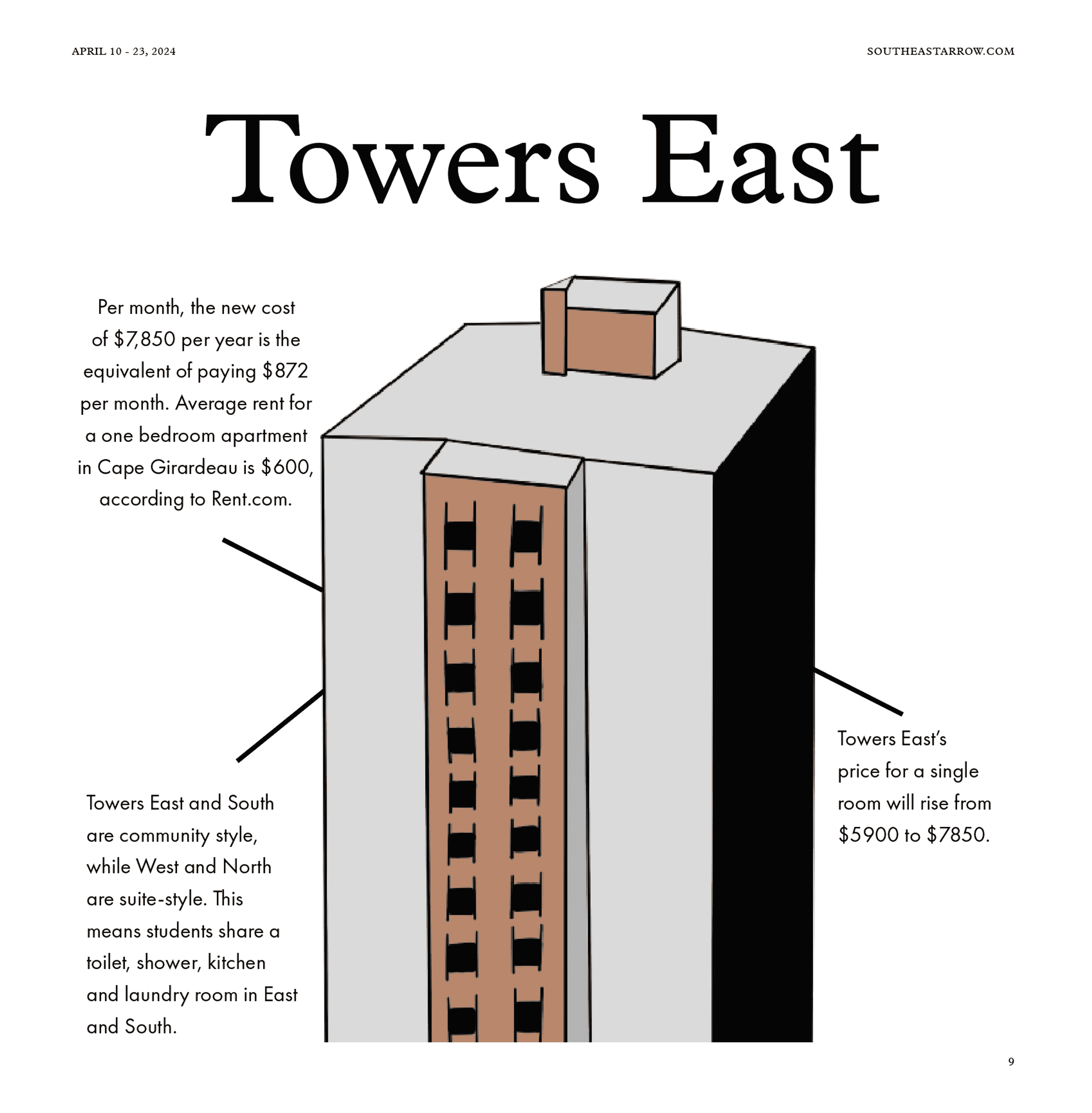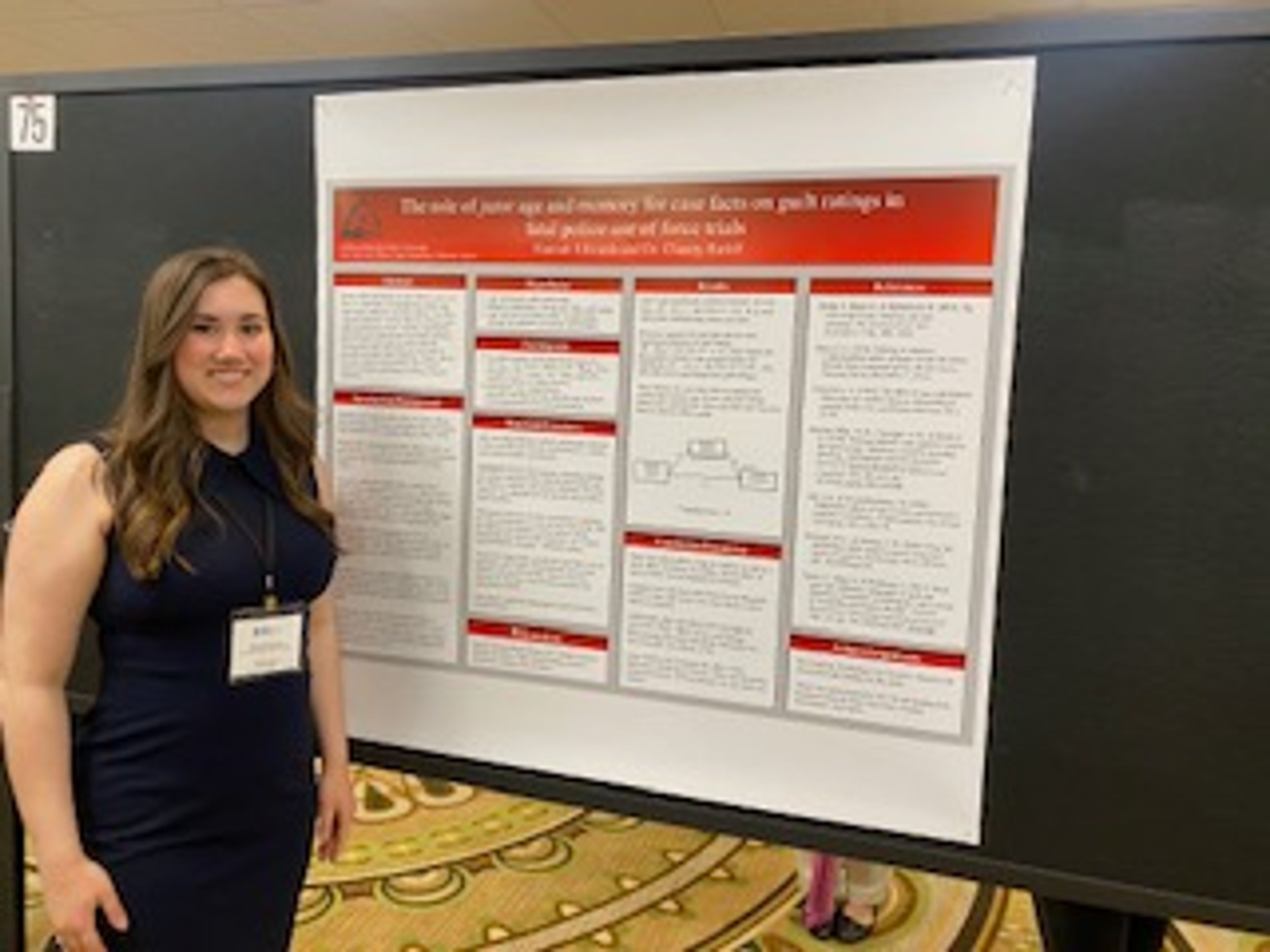Grauel
Grauel Building was completed in 1966 and originally was titled the Language Arts Building. It initially housed the English, speech and theatre departments of the university, which was then called the Southeast Missouri State Teachers College and later the Southeast Missouri State College. After about 10 years, the building was renamed in honor of Dr. Harold Oscar "H.O." Grauel. Grauel was an English professor who taught at Southeast for 43 years, from 1928 until his retirement in 1971. Grauel was heavily involved in his department, and was the adviser for the Capaha Arrow (now called the Arrow), Southeast's yearbook at the time called the Sagamore and he was the public speaker for the Cape Girardeau KVFS radio network.
Throughout his time at Southeast, Grauel photographed and documented the university's history. He was a friend to Sadie Kent, the namesake of Kent Library, and helped to put on theatrical productions while they were still being produced in the Academic Hall auditorium. The creation of the journalism program at Southeast is attributed to Grauel and he is known for contributing an anonymous column to the Arrow during his time at Southeast entitled "Out of the Dome."
Forrest H. Rose Theatre is also attached to Grauel Building, and can seat 500 people. Up until the completion of the Southeast Missouri State University River Campus in 2007, Rose Theatre was the main stage for the majority of theatre and dance productions on campus.
Grauel died in 1995, and his legacy lives on through the English department and the Arrow newspaper.
Scully
Originally called the Education and Psychology Building, Scully Building was added to Southeast's campus between 1968 and 1971. To this day, the building houses the College of Education and the Department of Psychology, along with the Department of Human Environmental Studies.
The building was eventually named after Dr. Mark F. Scully, the then Southeast Missouri State College's 10th president. Scully was president of the college from 1956 to 1975 and was the school's first alumnus president. Many people characterize Scully's time as president at Southeast as a period of growth, where the school increased in size on a number of levels from student enrollment to its number of academic buildings. In 1958, there were 11 buildings on campus including residence halls. In the following 15 years, Scully worked to add eight new buildings on campus including three new residence halls -- Dearmont, Towers and Greek -- and five new academic buildings -- Brandt Music Hall, Grauel Building, Magill Hall, Parker Hall and Scully Building. The University Center also was constructed during this time, and the library underwent an upgrade as well.
Throughout his presidency, Scully helped to grow enrollment from 1,500 students to 8,000. He helped to create a number of new program offerings on campus, from the law enforcement and criminal justice program to the creation of the graduate program. He brought the Reserve Officers' Training Corps, or ROTC, to campus and also worked to expand the university farm. He established an attendance policy on campus, allowing students to only miss three classes before being suspended from a class, and he instituted a general education requirement all students needed before graduation. He also helped to implement the foundation for the University Speakers Series in beginning a program to help bring distinguished speakers to the campus.
The university has, in part, Scully to thank for its name today, because in April of 1972 former Governor of Missouri Warren E. Hearnes approved the name change proposed by the Board of Regents from Southeast Missouri State College to Southeast Missouri State University, of which Scully was in favor.
Scully helped to increase support for the athletic program at Southeast and created a summer band camp for the university's Golden Eagles Marching Band.
Scully, who died on May 25, 2002, was instrumental in university growth on a monumental level, and his memory is memorialized in one of the buildings he helped to create, allowing him forever to be at the foundation of learning.
Carnahan
Carnahan Hall, originally called the Science Building, was the second building built as a part of the Southeast Missouri Normal School. The building was constructed in 1902, just as the Normal School Building, the school's first building, burned down. Carnahan can consequently be considered the oldest building on campus, and it has since been gutted.
To maintain the historic integrity, its outer shell was maintained while the inside was completely redone to upgrade the building to be more technologically advanced for students and faculty.
After the renovations were completed in 1998, the building was rededicated as Carnahan Hall in honor of Albert Sidney Johnson "A.S.J." Carnahan.
Carnahan was born and raised on a farm near Ellsinore, Missouri. Throughout his life, Carnahan held a number of different positions, from a schoolteacher to a member of a Navy aviation unit, until he returned to Southeast Missouri to complete his education at the then Southeast Missouri State Teachers College. Once he earned his master's degree he went on to serve as a school administrator in several counties in Missouri, and then was nominated in 1944 as the Democratic option for Representative in Congress for the Eighth Congressional District in Missouri. He won the election and subsequently served seven terms as a Congressman until he retired in 1961. Carnahan was honored with Southeast's Alumni Merit Award in 1962, and then eventually again posthumously when he became the namesake for Carnahan Hall. Carnahan died on March 24, 1968.
Today, the building houses the history department and the Department of Political Science, Philosophy, and Religion.
Houck Field House/Stadium
The original Houck Field House was completed on March 15, 1927, and burned down on Feb. 17, 1948. By 1951 the field house was rebuilt and expanded to accommodate the university's athletic needs, considering Academic Hall's gymnasium had become too small.
The new building served as the basketball facility and housed Southeast's athletic department until the new multipurpose Show Me Center was finished in the summer of 1987. Today, the field house is kept alive by women's volleyball and gymnastics.
The football stadium was built in 1930 alongside Houck Field House, and is known as one of the oldest stadiums in Missouri. The stadium was built out of limestone that was originally quarried from the site on which it stands. Currently, the stadium is used for football and soccer games and is overlooked by multiple university residence halls.
The field house and stadium are both named after Louis Houck, an entrepreneur, journalist, lawyer and philanthropist. Houck was a local railroad man who helped to develop more than 500 miles of railroad track throughout Missouri, which helped increase the area's population and commerce. He is known for attending the 1904 World's Fair in St. Louis and bringing back several large light fixtures that are now hanging in Academic Hall, along with an array of statues that are now housed in the Aleen Vogel Wehking Alumni Center.
Houck became a member of the Board of Regents at Southeast in 1886 and served as its president for 36 years from 1889 until his death in 1925. He was instrumental in the development of the Southeast Missouri area, and many consider him the "Father of Southeast Missouri." His memory is celebrated in two of the university's oldest athletic facilities.




